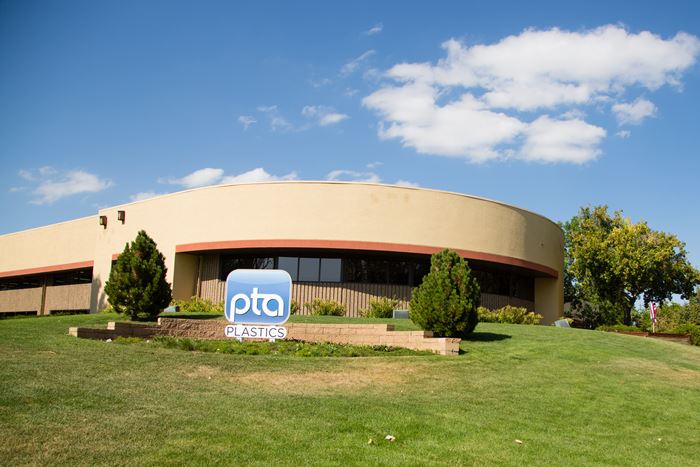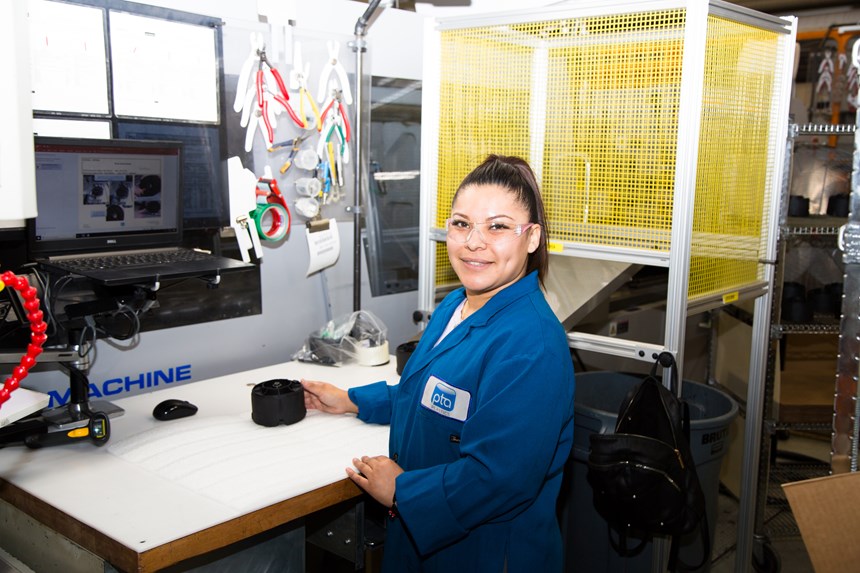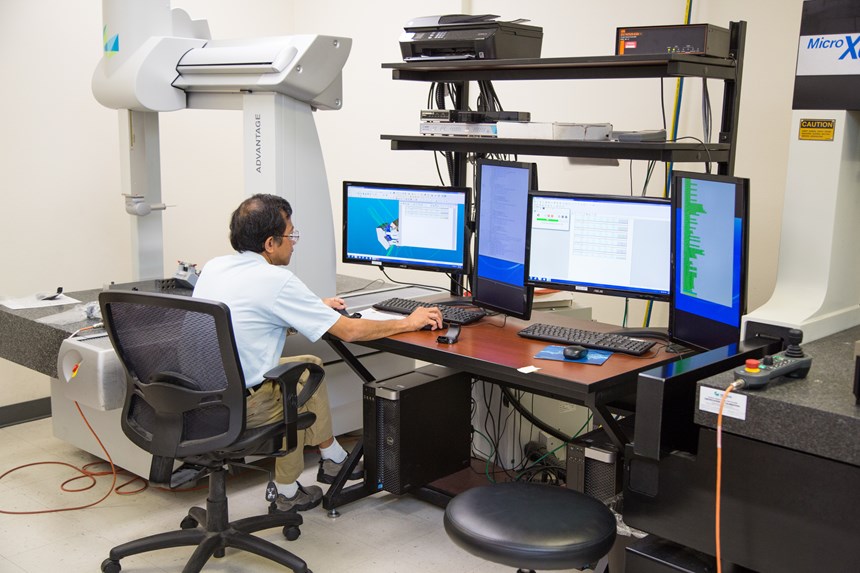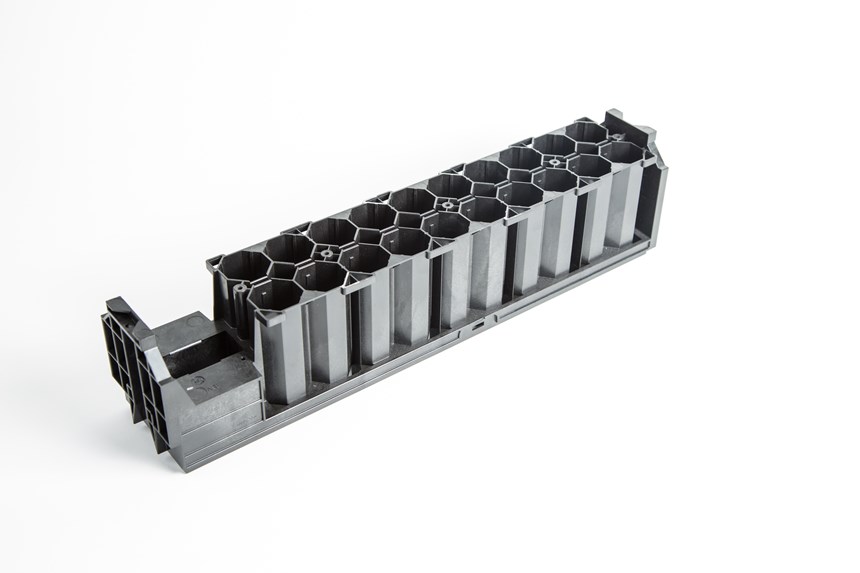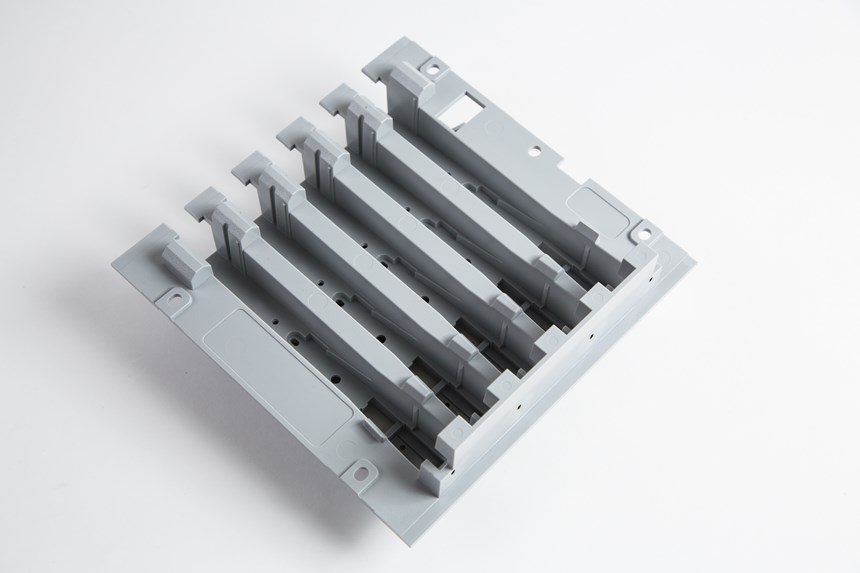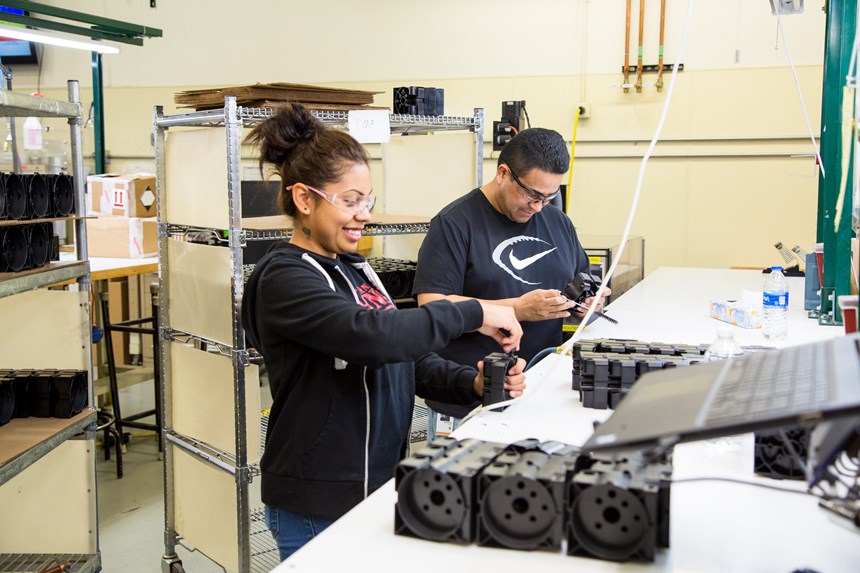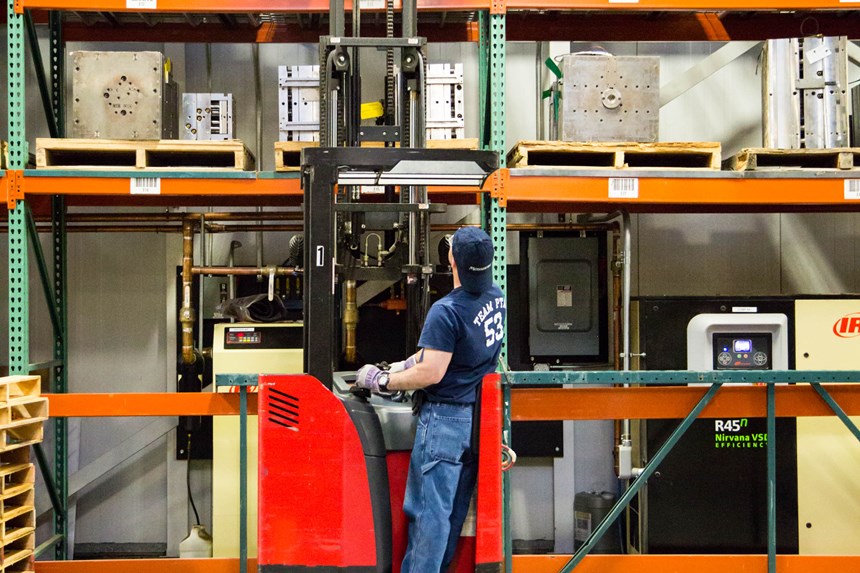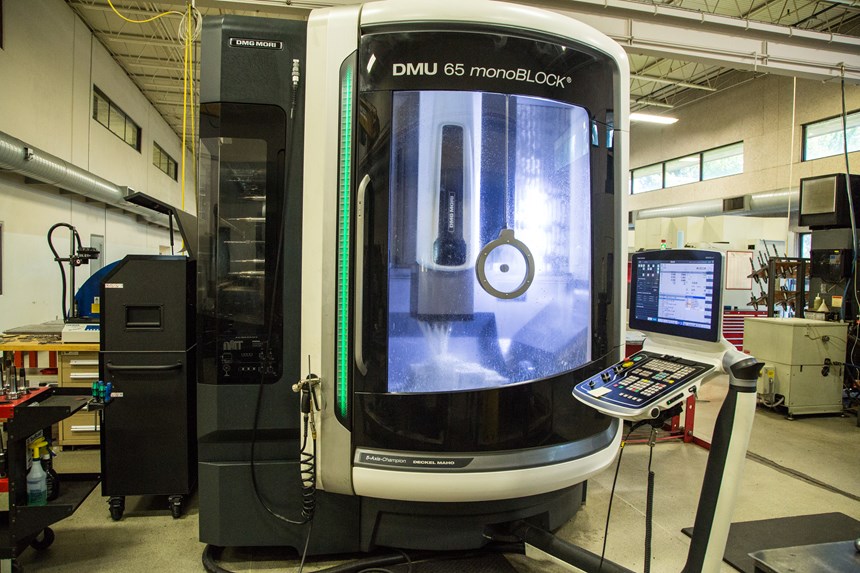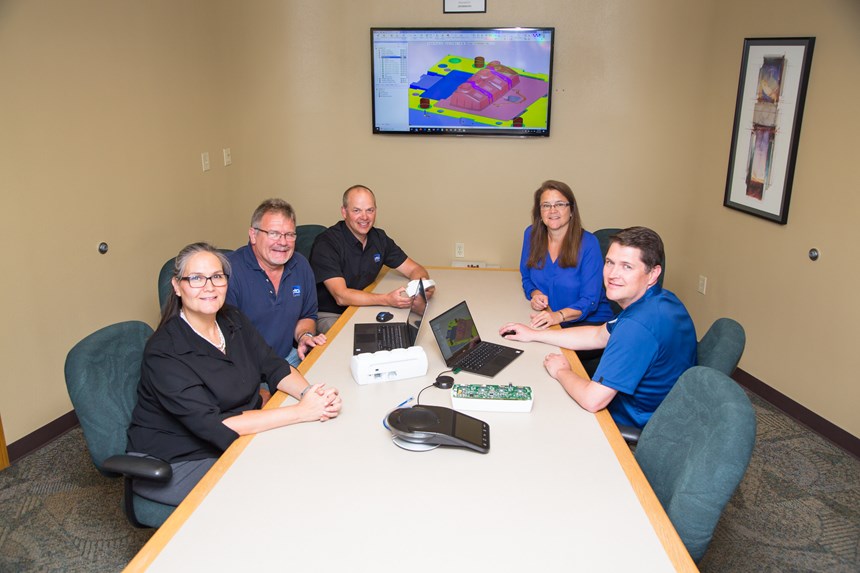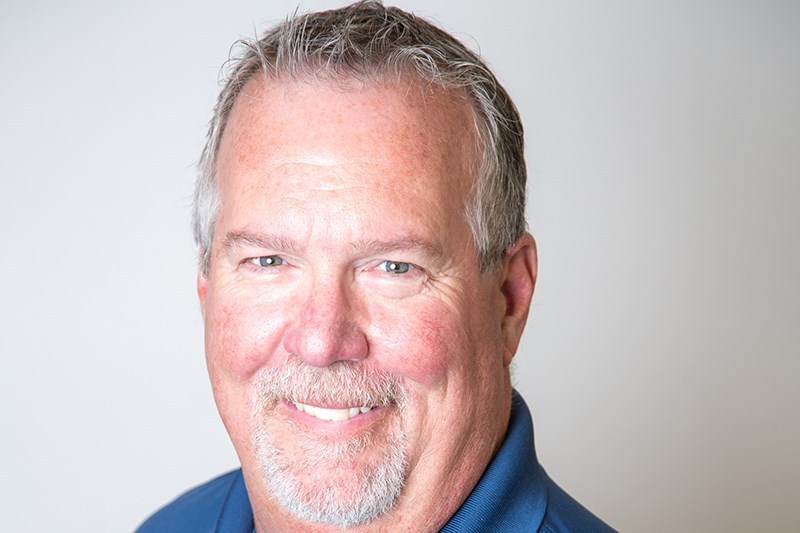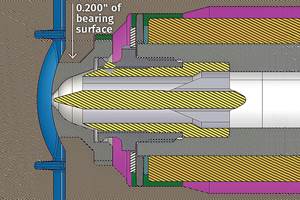Data Driven, Employee Owned
Approaching its seventh decade in business, PTA Plastics has shifted its location and remade its customer base since its founding in 1953, but many things have not changed in the intervening years, including an emphasis on people and leading-edge technologies.
Founded in 1953 in Bridgeport, Conn., custom injection molder and moldmaker PTA Plastics currently operates out of facilities in Oxford, Conn. and Longmont, Colo. But back in 1999, workers at a third site in Des Plaines, Ill. faced a decision. The Illinois plant would be closing, and while PTA would offer jobs to its workers at the two remaining sites, they would still have to decide whether to pick up and move to the East Coast or Rocky Mountains or stay put and find a new job.
The move had split the company, literally, but could have done so figuratively as well. In the end, all but one employee found a new PTA home, and Colorado received a healthy influx of Illinoians. Plastics Technology visited PTA’s facility in Longmont, which is 30 minutes northwest of Denver, the day after a narrow loss by the Chicago Bears, and more than a few of those transplants lamented the state of their long-distance “home” team with Rich Dorans, PTA’s president and PT’s tour guide.
Dorans, an Illinois native who started with PTA in 1984, faced the stay-or-go decision 20 years ago. He made the move, and in March 2019, was named PTA’s president, taking over for Ray Seeley, who stepped aside after 40 years leading the company. When PT visited, Dorans—who had spent the previous week at an industry conference—was prepping to head to the K Show in Germany. A taxing schedule, but one that serves a core tenet.
I don’t want to be ‘Amazoned’ or ‘Uberized’—we’re just trying to stay ahead of the curve from the technology standpoint.
“We just stay on top of the shows,” Dorans says. “Whether it’s IMTS (the International Manufacturing Technology Show) on the tooling side, or NPE and K on the plastics side.” Technology has long been a focus for the company and that didn’t change when Dorans took over. In fact, the concentration might have sharpened. The company is in the midst of a strategic planning initiative—PTA 2030-Envision the Future—that emphasizes where the industry and the market are headed and what the company would have to look like to continue to thrive. Making that determination is a cross-sectional team of 10 employees.
“We take a look at where we are today, what the disruptors are going to be out in the future, and really how can we be a disruptor rather than getting disrupted,” Dorans says. “I don’t want to be ‘Amazoned’ or ‘Uberized’—we’re just trying to stay ahead of the curve from the technology standpoint.”
Keeping Competitive in Moldbuilding
One way PTA has remained ahead of that curve has been to find, defend and grow a niche in the market. That has meant a greater emphasis on medical clients and dedication to inhouse mold building, design-for-manufacture know-how, and value-added services.
In the early 2000s, as many molding shops de-emphasized their tool rooms and customers sought low-cost offshore molds, PTA did the opposite and invested in mold building in Connecticut and Colorado. “We were very aggressive towards growing the tooling business when many others were running away, pulling everything offshore,” Dorans says. “We just tried to understand what we needed to do.” Dorans admits that PTA wasn’t trying to compete with offshore moldmakers on cost, but it hoped to make a big-picture financial and long-term service case to its customers. “If your customer is looking at the total landed costs,” Dorans says, “at times, it still makes sense to do the work domestically, and you have control over that.”
We do not design parts, but we can help our customers design a part that’s manufacturable and cost-effective.
Occupying more than 10,000 ft2, PTA’s toolroom in Longmont runs 24 hr a day with two shifts. Between the two facilities, PTA has 18 tool makers and produces up to 500 molds annually. Dorans estimates that 95% of the jobs it’s molding are run in tools made in house. Some mold components are outsourced, but the most important parts of the tool are cut by PTA. “Anything that touches plastics, we keep in-house,” Dorans says. Even for a component like a mold base, many of which PTA purchases from DME, Dorans notes that it is customized to the company’s specs.
The toolroom, like the rest of the plant, is paperless, pulling CAD and CAM data from Cimatron software and feeding work progress into PTA’s ERP system supplied by InFor Syteline. The tool room is bookended by a Makino SNC 64 making electrodes from graphite for EDM on one side and a 5-axis Monoblock 65 Deckel Maho cutting steel on the other, with a variety of metalworking equipment in between. Dorans says PTA makes “purpose-built tooling”. That is, molds fabricated in a manner and from materials that are commensurate with what their ultimate job will be—satisfying the task to come while not being overengineered.
Because PTA can involve itself upfront in the design process—Dorans calls its capabilities here a “known strength”—it can put a project on the path toward a well-designed tool and a robust molding process while it’s still a 3D model. “We do not design parts, but we can help our customers design a part that’s manufacturable and cost-effective,” Dorans explains. “In some cases, it could be just eliminating a detail, which will save them money; or from a quality standpoint, refining a design we could all be much more successful with.”
Molding and More
Molding operations are split between two rooms. The first, adjacent to the tool room, is filled by two rows of presses, while the other features a mix of presses and an assembly/secondary-operations area. Many value-added operations are mobile and can be wheeled into position adjacent to the press during molding runs. PTA has 34 injection machines companywide, with 18 in Longmont ranging up to 1375 tons. Most of the presses in Colorado are newer Toshiba’s, with an older Newbury and a Battenfeld (its largest machine) mixed in. Subtracting those two, the average press age comes in at just under 8 years.
In addition to straight injection molding, the company can do structural foam and gas assist. As PT visited, a Bauer compressor for gas assist was being wheeled into place next to one of the Toshiba machines. Keeping with its efforts to stay on technology’s cutting edge, PTA added gas assist when it was just getting started. Dorans notes that gas assist allows customers to break some design rules while also offering cosmetic and dimensional-stability benefits.
Layout of he Longmont building, constructed in 1984, is not conducive to central drying, so PTA uses mobile dryers there. Recent additions include four new Matsui dryers. Dorans notes that PTA relies on a low-volume/high-mix business, which requires some agility, as the number of setups per month can range from 550 to 600.
The burden of managing those setups is eased by the company’s PTA Job Book software, created in-house about 13 years ago to help remove paper from the shop floor. At many other molding shops, a three-ring binder follows a job around, containing key specs and parameters for a part and mold. PTA’s Job Book makes this all-digital, allowing process and setup technicians to pull up everything from process parameters to water-line drawings on a press-side laptop. Step-by-step setup and assembly instructions are laid out with pictures and captions; and the system, which ties into the plant’s ERP software, provides real-time scrap data.
Robert Berg, director of information technology, says that since its inception, Job Book has been improved with direct feedback from the operators. Eventually, the company wants to tie in other equipment in the cell, including dryers. To make this, and other initiatives possible, PTA is currently in the midst of a building-wide IT overhaul, replacing older wire infrastructure with new fiber-optic cables.
Making Room to Grow
The company has taken on a 5000-ft2 offsite storage facility, which opens up some space in its warehouse. New racks were recently installed in the warehouse, and eventually most of the assembly and decoration work will be moved into that space, freeing up room for more injection machines. The wall currently occupied by secondary operations is already plumbed for another three presses, which could range up to 180 tons in clamp force.
Value-added work has become a key and growing business for PTA, with Dorans noting, “It is very rare for us to mold a part and ship it without doing anything to it.” It is also rare for the company, which generates 70% of its business from medical, to take on simpler jobs. In the assembly area, Dorans picks up a housing with TPE overmolding and multiple screw inserts in different sides and along various planes. “This is a typical PTA part,” Dorans says, adding, “We don’t get poker chips.”
“It is very rare for us to mold a part and ship it without doing anything to it.”
Dorans estimates that the company has 700 active tools in Longmont, with probably 1200 company wide. A strict preventive-maintenance schedule keeps these molds running, according to Brian Zutman, general manager. He notes that the ERP system will not allow a job to start up if the PM hasn’t been completed. The system works—PTA has tools from 1967 that are still running. Longevity is a particular benefit for medical tools—Dorans compares a good medical tool to an annuity, paying dividends for years after an initial investment. The downside, especially when you make upwards of 500 tools/year, is that mold inventory can build up. To avoid this, PTA performs a monthly review of the tool inventory, sending tools back to customers as they go out of service.
Equal Shares
In business, it has become a platitude to call on employees to “take ownership” of their jobs; but PTA has taken that principal literally. In 2012, when Ray Seeley was seeking to wind down his role with the company, he balked at selling the company. “All the sales options could have made him a lot of money,” Dorans says, “but he knew at the end of the day that PTA would not have remained what PTA has always been, and he really cares about the employees.”
Seeley’s solution was to create an Employee Stock Ownership Plan (ESOP), whereby he sold his stock to the company, creating a trust that holds the stock on the employees’ behalf with the share value determined by the success of the company—which, of course, is ultimately driven by its workers.
“Our share value continues to grow year after year,” Dorans says, “and the employees are all given shares—they don’t buy them—so it’s an added benefit. It really makes you part of the team, and at the end of the day, your actions can actually improve the share value, and you can see those numbers continue to grow every year.” Since the inception of the ESOP, PTA reports that its stock performance has beaten the S&P every year, displaying the competitive strength of ESOP companies.
PTA’s share value started at $3.95 in 2012, and came in at $12.90 in 2018. In October, PTA celebrates Employee Ownership Month, along with hundreds of ESOP companies around the country. Among other festivities, PTA will hold a raffle with prizes for workers who can make the closest guess at 2019’s share price. On a shelf in his office, Dorans has a row of mugs and cups commemorating the share price for each year, with steady increases all along. A new mug will soon be on Dorans’ shelf, but he says he can’t yet tell what number will be on it.
“I’ve already put my number in,” says Don Williams, director of manufacturing.
“What’d you put in,” Dorans asks. “$14.20,” Williams responds. Dorans just smiles.
Related Content
Back to Basics on Mold Venting (Part 1)
Here’s what you need to know to improve the quality of your parts and to protect your molds.
Read MoreHow To Design Three-Plate Molds – Part 4
There are many things to consider, and paying attention to the details can help avoid machine downtime and higher maintenance costs — and keep the customer happy.
Read MoreOptimizing Pack & Hold Times for Hot-Runner & Valve-Gated Molds
Using scientific procedures will help you put an end to all that time-consuming trial and error. Part 1 of 2.
Read MoreHot Runners: Truths. Myths, Overlooked Areas: Part 2
Here’s a view from the trenches of a tooling manager who, over 30 years, has experienced the joys and pains of using virtually every type of hot runner on the market. Part 2.
Read MoreRead Next
See Recyclers Close the Loop on Trade Show Production Scrap at NPE2024
A collaboration between show organizer PLASTICS, recycler CPR and size reduction experts WEIMA and Conair recovered and recycled all production scrap at NPE2024.
Read MoreBeyond Prototypes: 8 Ways the Plastics Industry Is Using 3D Printing
Plastics processors are finding applications for 3D printing around the plant and across the supply chain. Here are 8 examples to look for at NPE2024.
Read MoreFor PLASTICS' CEO Seaholm, NPE to Shine Light on Sustainability Successes
With advocacy, communication and sustainability as three main pillars, Seaholm leads a trade association to NPE that ‘is more active today than we have ever been.’
Read More

